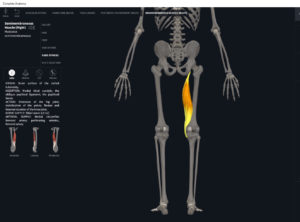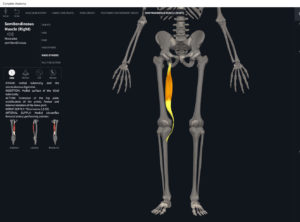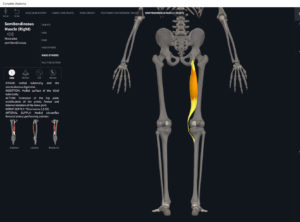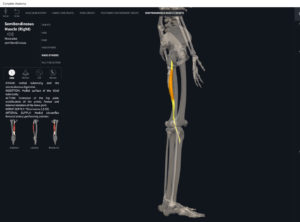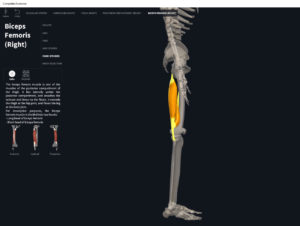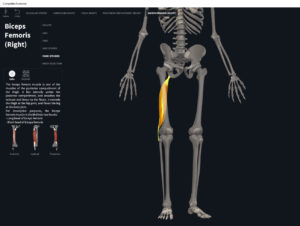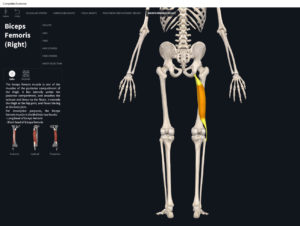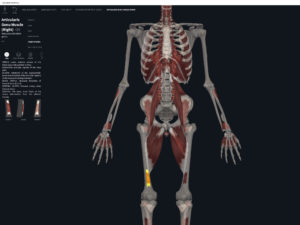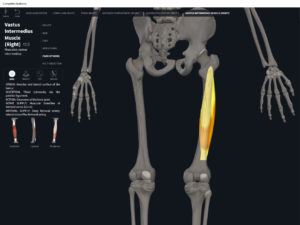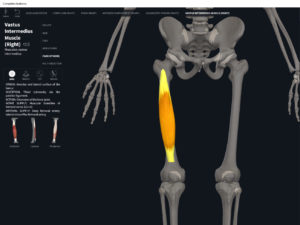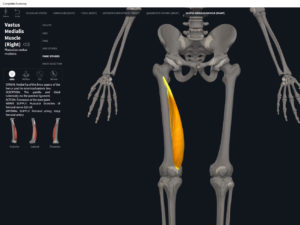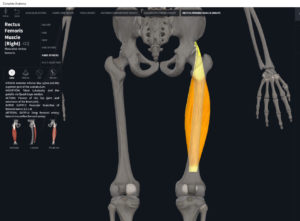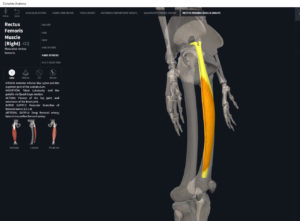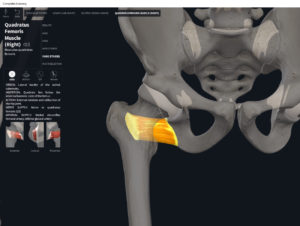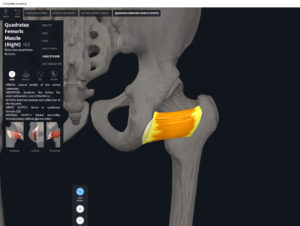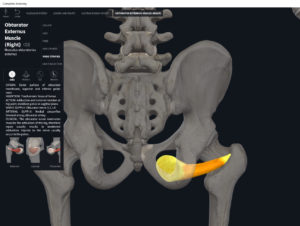Anatomy & Physiology: Muscles—Semimembranosus.
Structure.
- Origin: ischial tuberosity of pelvis.
- Insertion: posterior aspect of the medial tibial condyle of the tibia.
Function.
- Concentric action: accelerate knee flexion, hip extension, and tibial internal/medial rotation.
- Reverse mover action: posterior tilt pelvis; thigh flexion and lateral rotation; ipsilateral rotation and ipsilateral elevation of pelvis.
- Eccentric action: decelerates knee extension, hip extension, and tibial external/lateral rotation.
- Isometric action: stabilization of knee and lumbo-pelvic hip complex.
- Innervation: tibial nerve.
- Arterial supply: inferior gluteal artery, obturator artery.
Clinical Significance.
More.
- https://www.anatomynext.com/semimembranosus/
- http://orthopaedicprinciples.com/2018/05/anatomy-of-the-semimembranosus-muscle/
References
Biel, A. (2015). Trail guide to the body: A hands-on guide to locating muscles, bones and more.
Clark, M., Lucett, S., Sutton, B. G., & National Academy of Sports Medicine. (2014). NASM essentials of corrective exercise training. Burlington, MA: Jones & Bartlett Learning.
Jenkins, G., & Tortora, G. J. (2012). Anatomy and Physiology: From Science to Life, 3rd Edition International Stu. John Wiley & Sons.
Muscolino, J. E. (2017). The muscular system manual: The skeletal muscles of the human body.

